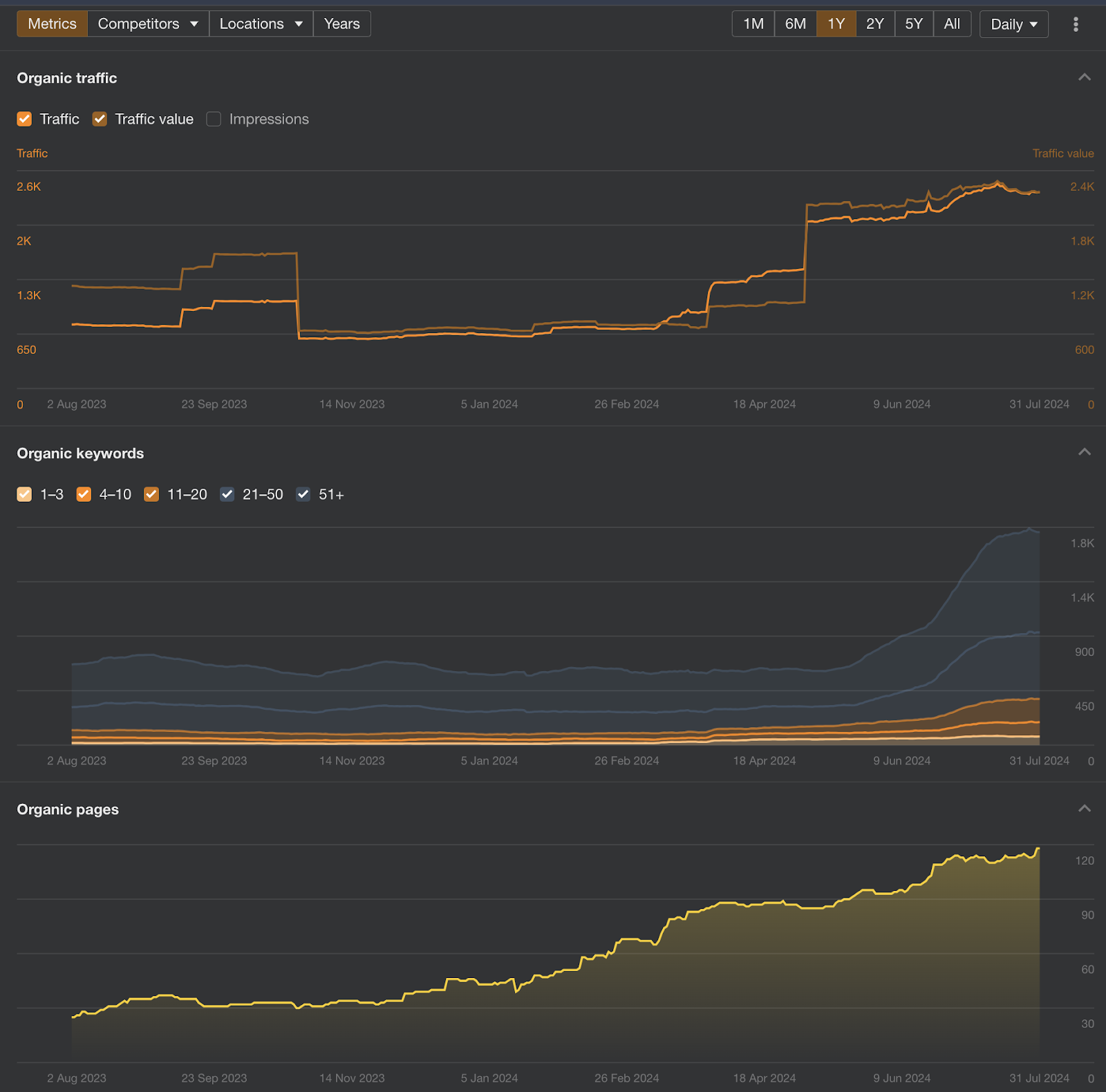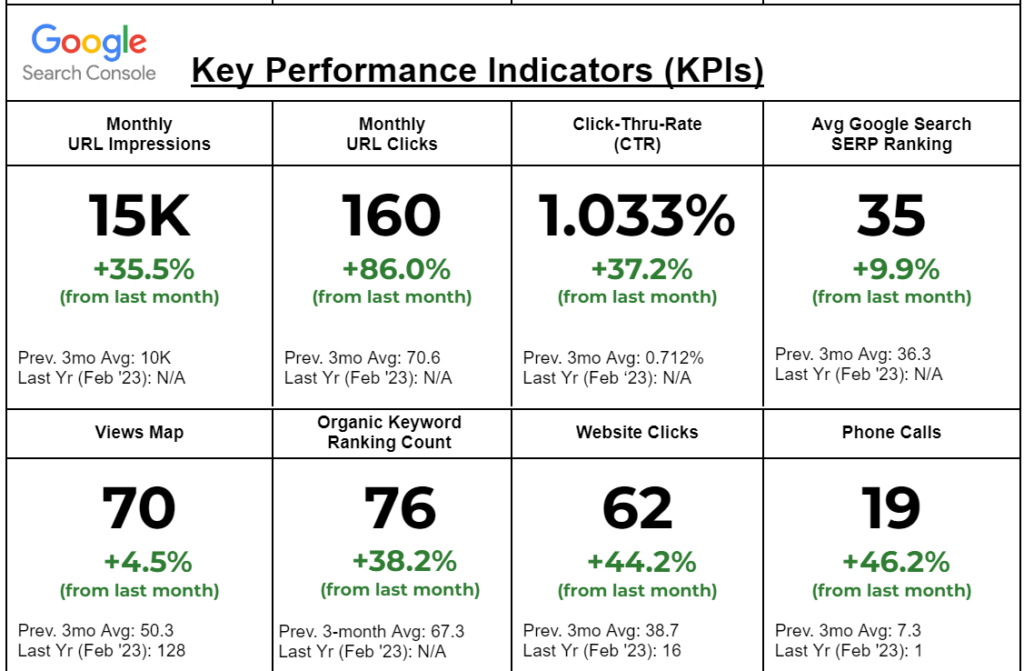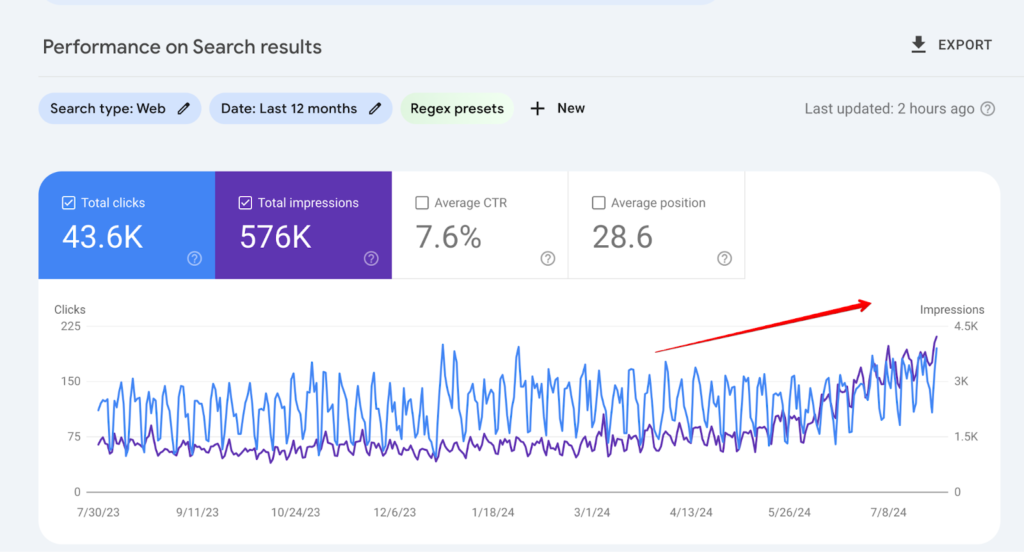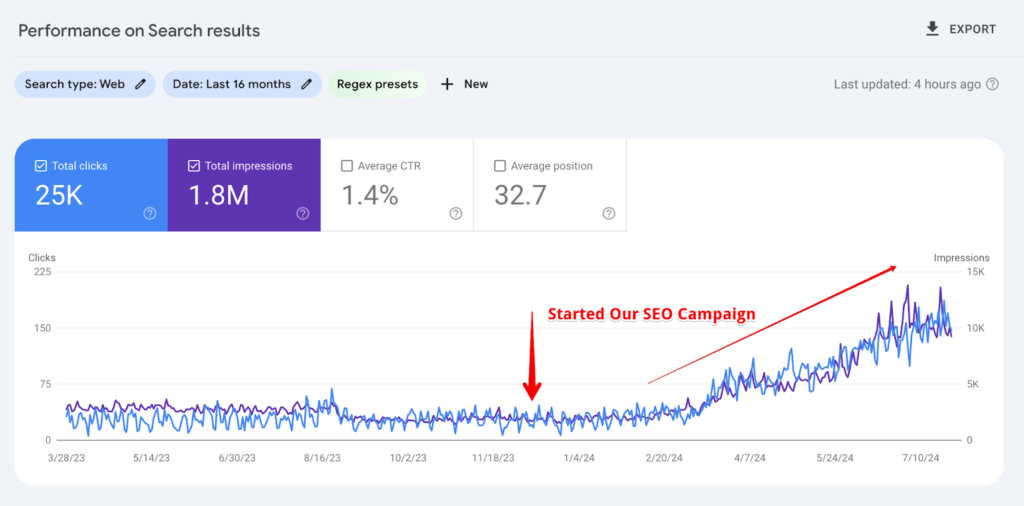Local SEO: How We Increased Organic Search Traffic by 330% and Doubled Leads in Just 7 Months
We helped our client grow organic traffic and double their leads by 330% within 7 months.
This case study demonstrates how we achieved significant growth in organic traffic for our client with our strategic SEO approach. We have detailed our process, the results we achieved, and the timeline. Here’s a quick overview:
Nature of the Business
- January 2024
Our client is an established leader in the wastewater treatment industry in Australia and New Zealand. They offer a comprehensive range of products and services for wastewater, rainwater, and stormwater management. With a reputation built over 50 years, they are known for their high-quality, durable systems and commitment to environmental and human health. Their business operates both nationally and internationally, with a strong focus on local service and maintenance.
The Challenges
Despite their brand reputation and industry presence, their SEO visibility was underperforming. Most of their sales and leads came through direct, referrals and social media, with their website’s SEO strategy proving ineffective. Similarly, most organic search visitors come to the site with terms associated with branded queries. From here, we can assume that this site fails to take advantage of non-branded traffic potential terms to help attract and accommodate new visitors. Thats why they needed to improve their search engine rankings to enhance their online presence and attract more qualified leads.
Our Winning Strategy That Skyrocketed Our Client's Traffic
01
Technical SEO Audit and Fix
Our first step was to conduct a comprehensive technical SEO audit to identify critical issues impacting site performance and search engine visibility. We discovered multiple crawl errors and broken links that were preventing proper indexing. Additionally, slow page load times were negatively affecting user experience and search rankings. Mobile usability issues were also prevalent, as several site elements were not optimized for mobile devices. To address these problems, we fixed crawl errors and broken links, implemented caching and image optimization to speed up page load times, and redesigned the key pages to be fully responsive, ensuring a seamless experience across all devices.
02
Keyword Development & Intent Research
Next, we tackled the ineffective keyword strategy that was failing to align with the search intent of potential customers. We conducted extensive keyword research to develop a targeted strategy for product-based pages and supporting blog posts. This strategy included high-intent and long-tail keywords, ensuring that our content was aligned with user search intent and better positioned to attract qualified traffic.
03
Detailed Topical Map
We identified significant content gaps on the site and the need for more comprehensive coverage of relevant topics. To address this, we created a detailed topical map that guided content creation for the next 6-12 months. This map outlined key topics and subtopics to build topical authority and improve search engine relevance. By planning and prioritizing content development based on this map, we ensured that all critical areas were covered and aligned with user interests.
04
Improved Product-Specific Landing Page Layout/Design
The design and layout of product landing pages were poorly optimized for conversions, and the user experience was poor, leading to high bounce rates. We revamped the layout and design to enhance visual appeal and usability, incorporating clearer calls to action and improved page structure. Additionally, we updated the content on these pages to make it more engaging and relevant, incorporating targeted keywords and addressing user pain points.
05
On-Page/Content Optimization
On-page optimization was another crucial area. The site’s meta tags were not effectively optimized for relevant keywords, and header tags were used ineffectively. We optimized meta titles and descriptions to include targeted keywords, improving click-through rates from search results. We also implemented a clear and logical use of header tags to better structure content, enhance readability, and emphasize key topics, which in turn improved both SEO and user experience.
06
Adding Supporting Blog Posts
To engage users at different stages of their buyer’s journey, we published blog posts covering various content types such as Top of Funnel (ToFU) and Middle of Funnel (MoFU). The content was based on our detailed topical map, which helped us address different user needs and stages of the buyer’s journey. By focusing on high-quality, informative content, we drove traffic and increased engagement, supporting our overall SEO goals.
07
Geo-Targeted Location-Based Pages
The site lacked optimization for specific geographic areas, which limited local search visibility. We created and optimized location-based pages tailored to specific geographic areas, incorporating relevant local keywords and information to appeal to local users. This approach ensured that the client’s multi-location operations were well-represented and that local search opportunities were maximized.
08
Schema Markup Implementation
The absence of schema markup meant missing out on potential enhancements in search result visibility. We implemented schema markup to provide search engines with structured data about the client’s products, and services. This enhancement improved search engine understanding and visibility of rich snippets, contributing to better search results.
09
Local SEO
We optimized the client’s Google Business Profile and updated local citations to ensure accuracy across all local listings. This optimization improved local search rankings and strengthened the client’s presence in local search results.
10
Off-Page Optimization
We focused on building high-quality editorial links through HARO (Help a Reporter Out) and digital PR efforts. Additionally, we managed local citation and business directory listings to enhance local search visibility and domain authority.
Results
By addressing these specific issues with targeted strategies, we significantly improved the client’s online presence, resulting in a substantial increase in organic search traffic, sales/leads, and overall site performance.


Time Frame: Jan 2024 - Jul 2024
Related Case Studies

Law Firm SEO: How We Tripled (3X) Organic Leads / Calls in Just 5 Months

Local SEO: How We Increased Organic Search Traffic by 330% and Doubled Leads in Just 7 Months

eCommerce SEO: 3X the Organic Leads/Sales with 300% Growth in Organic Traffic

LET'S INCREASE YOUR SALES
Claim your $1,000 Audit for FREE by telling us a little about yourself below. No Obligations, No Catches.
NEWSLETTER
Join 5,000+ businesses smashing revenue goals with our weekly insights.
